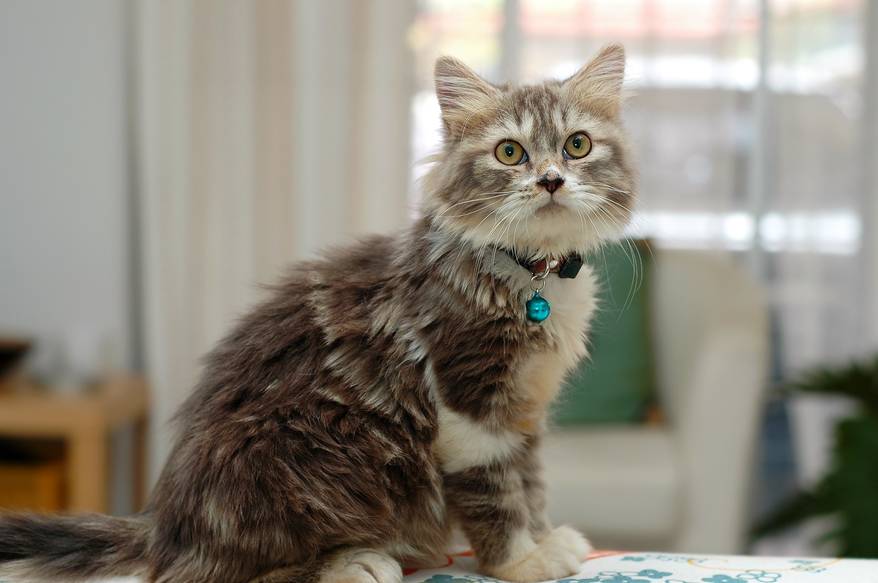
-
Find the right food for your pet
Take this quiz to see which food may be the best for your furry friend.
Find the right food for your pet
Take this quiz to see which food may be the best for your furry friend.
Featured products
 Small & Mini Savory Stew with Chicken & Vegetables Dog Food
Small & Mini Savory Stew with Chicken & Vegetables Dog FoodA delicious complement to the nutrition of Science Diet Small & Mini 7+ dog food
Shop Now Adult Healthy Cuisine Roasted Chicken, Carrots & Spinach Stew Dog Food
Adult Healthy Cuisine Roasted Chicken, Carrots & Spinach Stew Dog FoodDelicious roasted chicken paired with tender vegetables in a succulent stew
Shop Now Adult 7+ Perfect Digestion Chicken, Whole Oats & Brown Rice Recipe Dog Food
Adult 7+ Perfect Digestion Chicken, Whole Oats & Brown Rice Recipe Dog FoodScience Diet's breakthrough nutrition supports ultimate digestive well-being & healthy microbiome for dogs age 7+
Shop NowFeatured products
 Adult Savory Entrée Can Variety Pack Cat Food
Adult Savory Entrée Can Variety Pack Cat FoodPrecisely balanced nutrition with the delicious taste of savory minced chicken to help fuel the energy needs of cats during the prime of their life
Shop Now Adult 7+ Tender Tuna Dinner Cat Food
Adult 7+ Tender Tuna Dinner Cat FoodWith delicious chunks in a decadent gravy
Shop Now Adult 7+ Senior Vitality Chicken & Vegetable Stew Cat Food
Adult 7+ Senior Vitality Chicken & Vegetable Stew Cat FoodImproves Everyday Ability to Get Up & Go
Shop Now -
Dog
- Dog Tips & Articles
-
Health Category
- Weight
- Food & Environmental Sensitivities
- Urinary
- Digestive
- Joint
- Kidney
-
Life Stage
- Puppy Nutrition
- Adult Nutrition
- Senior Nutrition
Cat
- Cat Tips & Articles
-
Health Category
- Weight
- Skin & Food Sensitivities
- Urinary
- Digestive
- Kidney
-
Life Stage
- Kitten Nutrition
- Adult Nutrition
Featured articles
 Why Are Dogs and Cats So Cute?
Why Are Dogs and Cats So Cute?If waggy puppy dog tails and furry kitten yawns make you swoon, you're not alone. Why are cats so cute? And, dogs too! Let's find out!
Read More Does My Pet Hate Me?
Does My Pet Hate Me?Learn tips for bonding with your pet if you've ever thought, 'My dog doesn't like me, or 'Why do I have a standoffish cat?'
Read More Do Dogs and Cats have Belly Buttons?
Do Dogs and Cats have Belly Buttons?Learn whether cats & dogs have belly buttons like humans, what the function is, and if there are any health concerns associated with it.
Read More -


Your furry friend, like all animals, has her unique way of communicating, her own cat language, but cracking the code of these interactions can be tricky for human family members. So, how do cats communicate?
If your cat is trying to get your attention, she'll often meow, or she'll employ non-verbal communication, such as silently staring at you, pawing at your leg, knocking your coffee cup off the kitchen table or scratching the couch, but this only scratches the surface of how cats communicate.
The Cat's Meow
Cats do talk to their pet parents, typically using a meow to ask for her cat food bowl to be filled, or a whine to ask for more pets, and perhaps a hiss to tell you to back off. Some cat breeds, such as the Russian Blue and the Siamese, are very vocal and will chatter with you all day (and all night) long.
But what about cat-to-cat communication? If you share your home with more than one cat, you already know that they interact using verbal and non-verbal (scent markings, use of tail or paws, arching of the back, rolling around) cat language. Whether or not they understand each other in the same way that humans comprehend one another, however, is yet to be determined.
The majority of research conducted on cat communication focuses on how they communicate with humans. When speaking to their owners, cats employ a handful of distinct cat language sounds, including purr, hiss, howl, chirp, and, of course, meow. What's interesting to note is that your grown-up furry friend uses her meow as a special form of communication just for you and only you.
According to a study dubbed "Meowsic," launched in 2016 by Lund and Linköping universities in Sweden to examine how cats communicate with people (including whether or not cats mimic the same accents as their people), it was found that "adult cats only meow to humans and not to each other, most likely because their mothers stopped responding once they were weaned off her milk," explains The Science Explorer. What this confirms is that your fur baby really is your baby, so go ahead and proclaim proudly your status as a cat mom or cat dad. So, if you ever hear your cat talking, you can probably guess that she's trying to communicate with you rather than chatting up your other cat in the house.


Tasty Tips
The ABCs of Cat Language
Post-kittenhood, cats may not meow when interacting with each other. More often than not, they rely on non-verbal body language to express their feelings toward one another. But they do use vocalization as part of their cat communication, which is perhaps most evident during playtime, when your little critters growl, hiss or yowl at each other sometimes in sport, sometimes in fear or sometimes in anger.
In many ways, how cats behave toward us is not much different from the way they communicate with each other: nonverbally. "Putting their tails up in the air, rubbing around our legs, and sitting beside us and grooming us are exactly what cats do to each other," John Bradshaw, a cat behavior expert, tells National Geographic. This use of non-verbal communication is effective with humans as well as other cats.
Cats are considerably less demonstrative with their affection than dogs, says Bradshaw, but this doesn't mean that cats don't feel strong emotion. They just communicate it differently.
Although the field of cat behavior research is sparse in comparison to the many studies conducted on dogs and how pups think, behave, and communicate, it is well documented that cats are smart creatures—but you already knew that! So, while cats tend to have an independent nature, just know that they are communicating with you — you just may have to pay closer attention to their nonverbal cues to truly understand what she's trying to tell you.


Christine O'Brien is a writer, mom, and long-time cat parent whose two Russian Blues rule the house. Her work also appears in Care.com, What to Expect, and Fit Pregnancy, where she writes about pets, pregnancy, and family life. Find and follow her on Instagram and Twitter @brovelliobrien.
Related products
Related articles
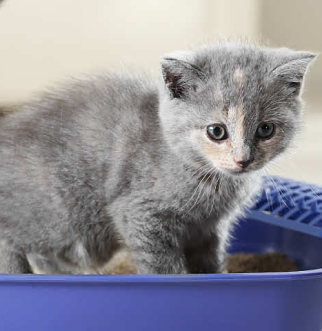
Cats are naturally very clean and chances are your kitten will already have learned how to use the litter box from her mother before she comes to live with you.
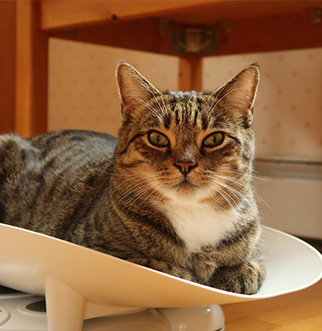
How do you get a cat to lose weight? Learn all about cat foods for weight loss, including how to choose weight control cat food and exercise tips.
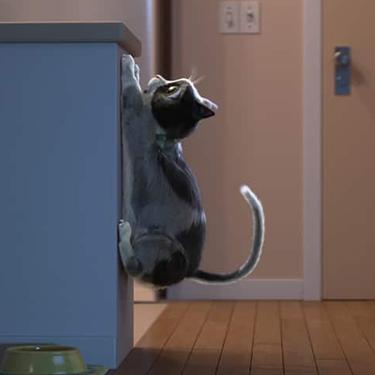
What is the best food for an overweight cat? Learn all about weight control food for cats, including what's in it and how it works.
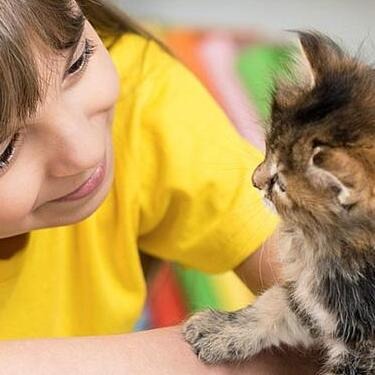
Discover how to train your cat, starting with very basic first steps that both reward good behavior and discourage the bad.

Put your cat on a diet without them knowing
Our low calorie formula helps you control your cat's weight. It's packed with high-quality protein for building lean muscles, and made with purposeful ingredients for a flavorful, nutritious meal. Clinically proven antioxidants, Vitamin C+E, help promote a healthy immune system.
Put your cat on a diet without them knowing
Our low calorie formula helps you control your cat's weight. It's packed with high-quality protein for building lean muscles, and made with purposeful ingredients for a flavorful, nutritious meal. Clinically proven antioxidants, Vitamin C+E, help promote a healthy immune system.


